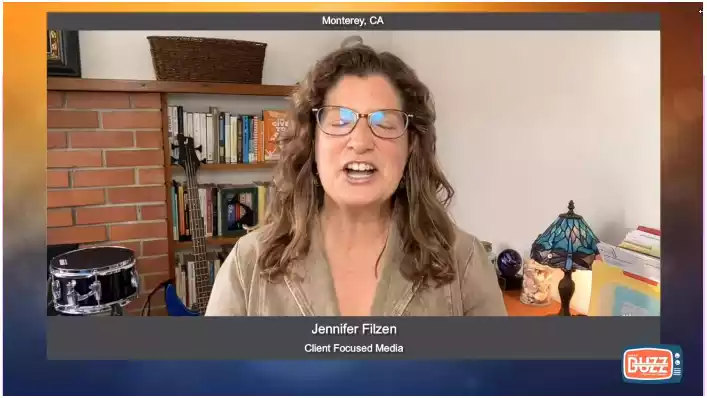Essential Preauthorization Guidelines for Healthcare Providers
Discover key preauthorization guidelines for healthcare providers needs to know! Enhance efficiency, minimize delays, and ensure seamless patient care with our comprehensive guide.

In healthcare, understanding what does prior authorization mean for prescriptions is crucial. This process requires approval from a health insurer before a prescription is filled to ensure the medication is covered, control costs, and verify its appropriateness. This approach enhances patient care and streamlines pharmacy operations, ensuring patients receive necessary treatments efficiently.
Let’s explore!
Table of Contents
Preauthorization Guidelines for Healthcare Providers
 Navigating the complexities of obtaining preauthorization can often pose a challenge for healthcare professionals. Ensuring that all necessary services are approved prior to delivery not only reduces costs for patients but also streamlines the workflow in settings. In today’s changing healthcare landscape, it is essential for providers to grasp and apply preauthorization methods. This article offers advice and strategies to assist healthcare providers in optimizing their preauthorization processes, ultimately improving satisfaction and operational efficiency.
Navigating the complexities of obtaining preauthorization can often pose a challenge for healthcare professionals. Ensuring that all necessary services are approved prior to delivery not only reduces costs for patients but also streamlines the workflow in settings. In today’s changing healthcare landscape, it is essential for providers to grasp and apply preauthorization methods. This article offers advice and strategies to assist healthcare providers in optimizing their preauthorization processes, ultimately improving satisfaction and operational efficiency.
Tips for Healthcare Providers to Enhance Data Security
Maintaining security measures in healthcare environments is crucial to safeguarding patient data and upholding trust among those seeking medical assistance. Here are some suggestions to help healthcare providers strengthen their security protocols:
- Enforce Strict Access Controls: ensure that authorized personnel can access health data. This can be achieved by implementing authentication measures like factor authentication (MFA), which necessitates multiple verification steps before granting access.
- Regular Security Training: Provide cybersecurity training for all staff members. This training should address threats, such as phishing attempts, and educate employees on practices for protecting information, including identifying suspicious emails and creating secure passwords.
- Secure Communication Channels: It is important to use encrypted methods for all data-related communication, whether it’s through email messaging platforms or file transfers. Encryption safeguards information by making it indecipherable to individuals.
- Conduct Regular Security Checks: Perform routine security audits and assessments to detect any weaknesses in your systems. This proactive approach allows you to address risks before they can be exploited.
- Maintain Software Updates: Keep all systems and software current with the security patches. Using software can create vulnerabilities that cyber attackers may exploit to gain access to data.
- Establish an Incident Response Strategy: Uphold an incident response plan outlining the necessary steps in case of a security breach, including detection, containment, elimination, and recovery procedures.
- Backup Data: Create backups of data regularly and store them securely. This practice helps ensure that data can be restored if there is a cyber incident like ransomware.
- Control Personal Device Usage: Limit the use of devices for accessing records. If personal devices are necessary, enforce security protocols and ensure they have the required security measures in place.
By following these suggestions, healthcare providers can enhance their security measures, safeguard sensitive patient data, and uphold trust within their communities.
Tips for Improving Preauthorization Procedures
Enhancing preauthorization processes is crucial for healthcare providers looking to boost efficiency and patient satisfaction. Here are some detailed strategies to assist providers in streamlining their preauthorization workflows, Leveraging Solutions, and Integrating advanced software solutions.
- Simplify the preauthorization process: Electronic Health Record (EHR) systems can be linked with preauthorization platforms to verify requirements and submit requests automatically. These technologies reduce input, minimize errors, and expedite authorization procedures.

Maintaining Clear and Up-to-date Documentation: Having current documentation in place is vital. Ensure that patient records, treatment plans, and medical histories are meticulously recorded. Accurate documentation helps support the necessity of requested services and speeds up the approval process.
- Establishing Specialized Preauthorization Teams: Creating teams to manage preauthorizations can enhance processing efficiency. These teams should be well-trained in understanding payer criteria. Stay informed about policy changes. Specialization allows for expertise development, leading to more submissions. Ensure staff members involved in preauthorization undergo training sessions to stay updated on payer requirements, coding changes, and documentation best practices. Informed employees are better prepared to submit requests, reducing the chances of denials.
- Establish a follow-up system to monitor the progress of preauthorization requests: Implement reminders for pending authorizations and follow-up procedures to prevent requests from slipping through the cracks. Timely follow-ups help resolve issues that are causing delays.
- Maintain communication channels with insurance payers to enhance the preauthorization process: Having dedicated contacts within payer organizations can facilitate query resolutions. Provide insights into specific requirements or processes unique to each payer.
- Optimize internal workflow processes by identifying and removing bottlenecks: Mapping out the preauthorization process allows for the identification of inefficiencies. Streamlining workflows ensures that each step is completed efficiently without delays. Regularly analyze preauthorization metrics, such as approval rates, turnaround times, and reasons for denials, to gauge performance effectively.
This information can offer insights into areas that need improvement and gauge the effectiveness of existing strategies. Ongoing monitoring of performance enables decision-making and process refinement. By incorporating these tactics, healthcare providers can significantly enhance their preauthorization procedures. Streamlined preauthorization processes result in approvals, decreased administrative workload, and increased patient contentment, ultimately enhancing the efficiency and efficacy of healthcare delivery.
I'm very thankful for Portiva who I know is looking after my practice while I'm gone the virtual assistants can manage prescription refills, documents they can triage patients and just kind of answer administrative questions and they can handle a lot on their own. But also, they're very good about contacting me if there's any emergency or anything I need to attend to. So I'm very thankful for Portiva they can help almost any provider almost anywhere and it really allows for some good work-life balance as I'm getting to experience right now at my family farm so I'm very thankful for Portiva and I'm very happy to use their services"

Board Certified Family Medicine Physician

Portiva's Virtual Medical Assistant - I have all the support I need. There's somebody checking my email, any patient messages. Patients are still able to schedule and handle any scheduling issues and any kind of billing that needs to still go through. Portiva hands handles it all for me. I have support i have somebody that I can access 24/7 pretty much. It's all very seamless. If somebody has an emergency or needs a medication called in. I know that the va's at portiva will handle that for me.

Board Certified Family Medicine Physician

Significance of Staff Training and Awareness
 Training and awareness among employees are elements of any healthcare institution. Continuous education ensures that staff members stay updated with the advancements and technologies while fostering a culture focused on compliance and safety. Trained staff are better prepared to comprehend and uphold standards, which is vital in healthcare environments where patient privacy and data security are paramount. Training programs should encompass topics such as skills, administrative procedures, cybersecurity measures, and patient communication strategies. Regular training sessions assist staff in gaining an insight into their roles and obligations, resulting in errors and improved patient outcomes.
Training and awareness among employees are elements of any healthcare institution. Continuous education ensures that staff members stay updated with the advancements and technologies while fostering a culture focused on compliance and safety. Trained staff are better prepared to comprehend and uphold standards, which is vital in healthcare environments where patient privacy and data security are paramount. Training programs should encompass topics such as skills, administrative procedures, cybersecurity measures, and patient communication strategies. Regular training sessions assist staff in gaining an insight into their roles and obligations, resulting in errors and improved patient outcomes.
Additionally, educating employees on recognizing phishing emails or handling information can significantly reduce the risk of data breaches and other security issues. Moreover, cultivating an environment that promotes learning can enhance employee morale and job satisfaction. When employees are confident in their abilities and understand their roles well, they tend to be more engaged and driven. This can result in improved teamwork, streamlined workflows, and higher levels of patient care. Investing in employee training and awareness is optional but a crucial strategy for enhancing the quality and safety of healthcare delivery.
In conclusion
Simplifying the preauthorization process is vital for healthcare providers looking to boost efficiency and patient satisfaction. Providers can significantly reduce approval times and administrative burdens by utilizing technology solutions, maintaining documentation, forming dedicated teams, and promoting strong communication with payers. Ongoing staff training, workflow procedures, and consistent monitoring of preauthorization metrics also ensure progress and adherence to best practices. These approaches need to speed up approvals. Also, it enhances the quality of patient care. Embracing these preauthorization practices will empower healthcare providers to navigate the complexities of the healthcare system effectively, resulting in better patient outcomes and smoother operations overall.
To learn more about prescription approval that can enhance your medical practice. Discover more about Portiva and unlock a world of possibilities by visiting our homepage today!
- The implications of prior authorization on industry
- Enhancing private practices with outsourcing precertification
- Analyzing the impact of prior authorization procedures
- Importance of transparency in healthcare pre-approval
- Prior authorization in patient care services
- Why reviewing prior authorization policies is critical
- How prior authorization impacts patient outcomes
- Prior authorization policy enhancements
- Assisting patients with prior authorization
- Prior authorization processes
- Managing patient rights in preauthorization processes
- Medical prior authorization policy changes
- Patient guide to navigating prior authorization
- True cost of prior authorization for patients and healthcare systems
- Challenges of implementing precertification services
- Strategies to incorporate prior authorization
- Optimize the use of prior authorization technology
- Accomplishing the efficient prior authorization

